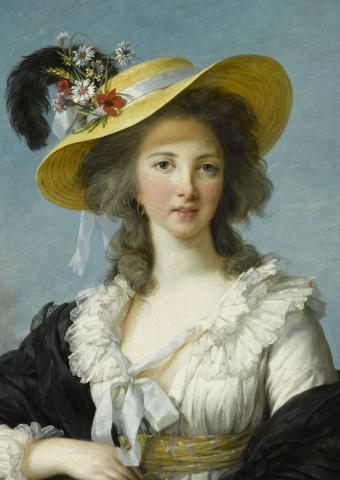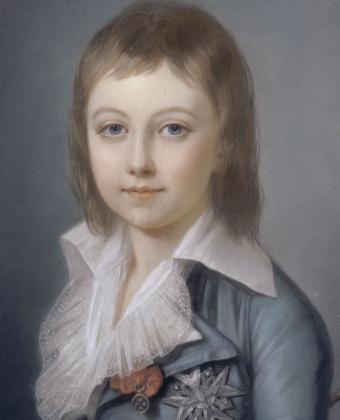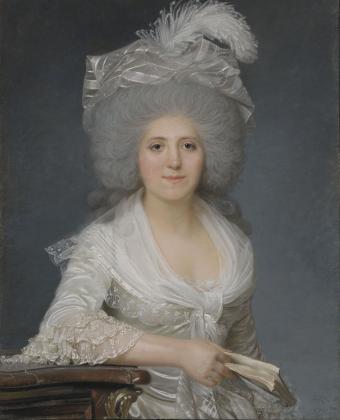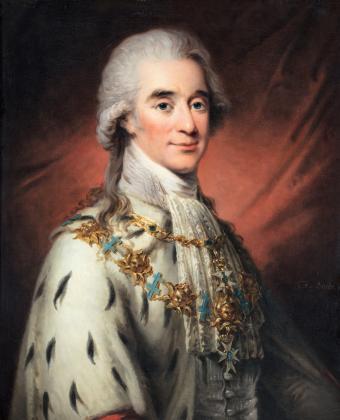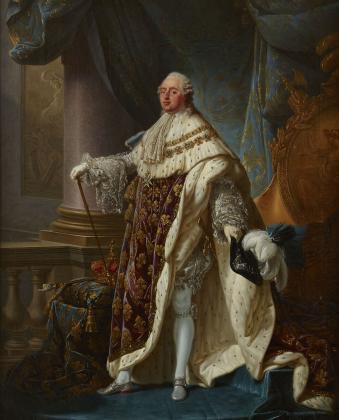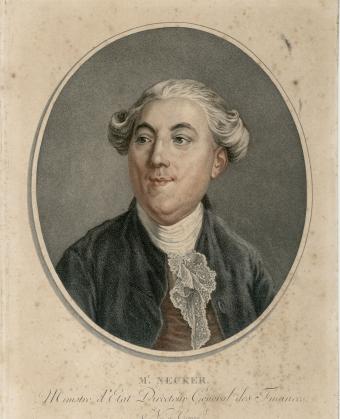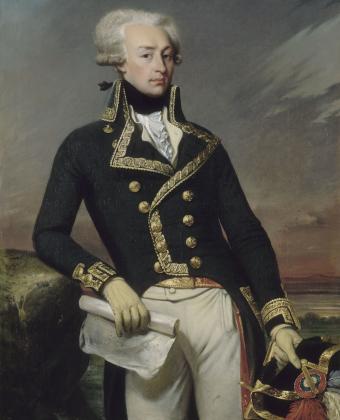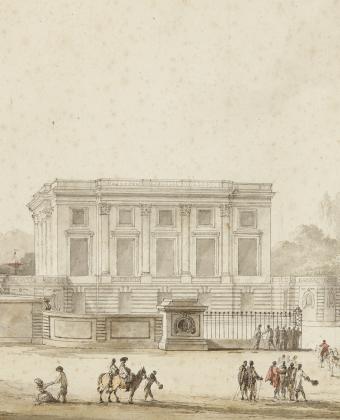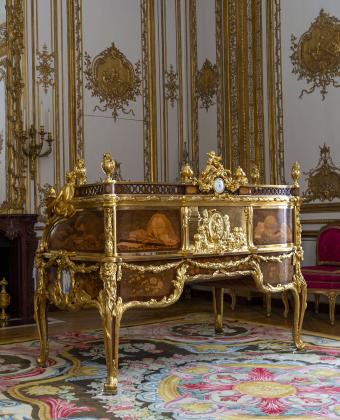Madame de Polignac was of a naturally lively, happy disposition, and became a close friend of Marie Antoinette from 1774 onwards. She thus made her entrance into the queen’s inner circle of trusted companions. In such company Marie-Antoinette was able to dispense with the usual protocol and etiquette, often shutting herself off from the court at her private palace, the Petit Trianon. A portrait by the Queen’s official artist, Élisabeth Vigée Le Brun, shows Madame de Polignac dressed in a blouse made of gaulle – a light, flowing fabric – and wearing a hat festooned with flowers, emblematic of the simple, carefree atmosphere which prevailed at the Trianon palace.
Madame de Polignac was made a duchess in 1780, much to the astonishment of the court, and was appointed Governess of the Royal Children in 1782, an honour which had previously been passed down from generation to generation in one of the kingdom’s great aristocratic families.
She thus left her apartment, reputed to be the ‘finest lodgings in Versailles’ after the apartments of the royals themselves, and moved into the Governess’ apartments, where she commissioned extensive renovation work.
She was forced into exile by the onset of the Revolution in 1789, and was a frequent target of the libels directed at the Queen and her inner circle, often criticising their extravagant expenditure. She was deeply upset at having to part from Marie Antoinette and continued to correspond with the Queen from her exile in Switzerland, Italy and finally Austria. Marie Antoinette sorely missed her friend too, expressing her grief in the letter she wrote upon her departure: “Adieu, dearest of friends; the word is awful, but I must say it; I have only strength enough to send you my love.” The Duchess of Polignac died in Vienna on 5 December 1793, fifty days after the Queen.

